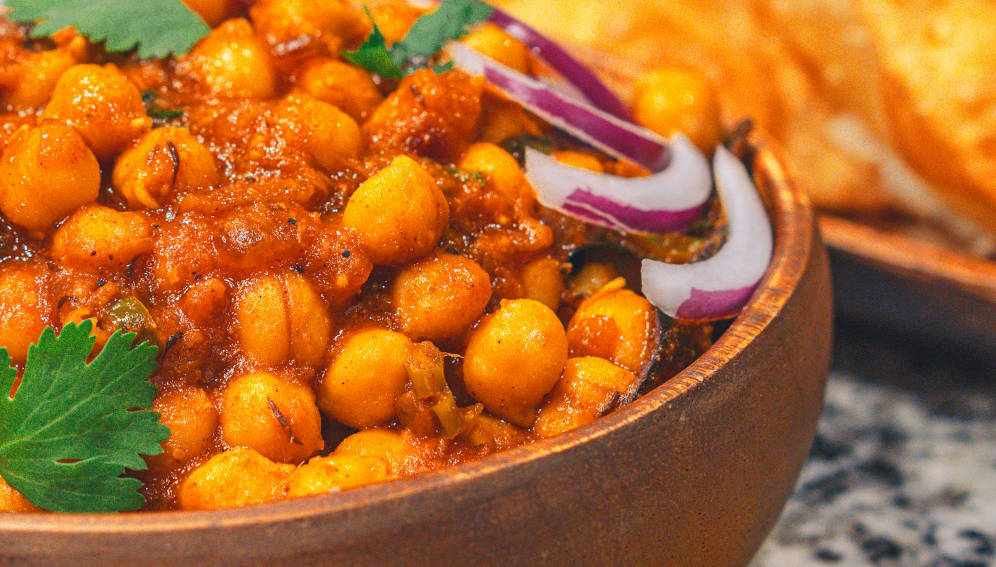
It is well known that meat dishes and fast food can have a high impact on biodiversity and sustainability. But recent scientific studies indicate that some vegetarian recipes popular in South Asia can also carry a surprisingly large biodiversity footprint.
Consumers have limited information on the biodiversity implications of choosing to eat a particular dish made with ingredients that add to pressure on the environment.
Take for example chickpea curry, a popular dish in India, where there is already high agricultural and population pressure.
As the world’s largest producer and consumer of chickpeas, India could help the cause of sustainable agriculture by a simple switch to other recipes, going by the findings of a study published in PLOS One.
Chickpea curry is one of 25 top dishes identified by the study as harmful to biodiversity. Chickpeas are mainly cultivated on land converted for agriculture in the southern parts of India’s Western Ghats, a biodiversity hotspot, it explains.
Heading the list is ‘lechazo azado’, or Spanish roast lamb, made using the meat of suckling lambs that are younger than 35 days.
The study, however, confirms that vegan and vegetarian dishes tend to have lower biodiversity footprints than meat recipes. Greenhouse gas emissions resulting from vegan and ovolactovegetarian diets (involving dairy and eggs) also have a lower environmental impact than most omnivore diets as they draw less on natural resources.
The good news is that scientific methods now available can help analyse the biodiversity footprints of popular dishes around the world and can in the future inform dining decisions that factor in sustainability.
Increasing awareness of the environmental impact of food-centric emissions has led to more research on the subject and it may not be long before the carbon footprint quantification of food products appears on menus and labels.
Examples of recipes that diners wishing to help conserve biodiversity could avoid also include fraldinha, a beef recipe originating from Brazil, and India’s famed legume dishes.
Greenhouse gas emissions
Sustainable food systems and sustainable diets are well recognised as important to address climate change. About a third of all human-caused greenhouse gas emissions are linked to food, with red meat, dairy and farmed shrimp the worst culprits, according to the UN.
The production of red meat and dairy needs extensive grasslands, which are often created by cutting down trees or mangroves, releasing carbon dioxide stored in trees.
Additionally, livestock emit methane, a powerful greenhouse gas, as they digest grass and plants. Livestock dung and chemical fertilisers release nitrous oxide, another important greenhouse gas.
Shrimp farms are frequently created by cutting down coastal mangrove forests that are known to act as carbon sinks. The large carbon footprint of shrimp or prawns is mainly due to the release of stored carbon released into the atmosphere when mangroves are cut down.
Food data
“Carbon footprint estimation of recipes can provide actionable insights into the environmental sustainability of recipes which are culturally influenced — it is now possible to build a database of ingredients which have a high carbon load,” says Ganesh Bagler, computational researcher focused on food, at the Indraprastha Institute of Information Technology, New Delhi.
According to Bagler, once there is an understanding of the correlation between taste and nutrition it is possible to design recipes that are both palatable and environmentally sustainable. “Compiling fine-grained carbon footprint data is the best way to address the problem of feeding an anticipated population of 10 billion people while paying heed to sustainability,” he said.
It is worth noting, says Bagler, that diets worldwide are dictated by food cooked according to traditional recipes that do not consider carbon or biodiversity footprints.
Reducing the carbon footprint of any food system is a much broader challenge than fixing recipes and dietary behaviour. It calls for the adoption of energy-efficient technologies, a transition to renewable energy sources, food waste decarbonisation, better agricultural practices and food processing techniques that take in health and environmental concerns.
Good nutrition and environmental sustainability are inextricably linked to food systems that conserve soil quality and local agricultural biodiversity while ensuring that farmers and others on the supply side are aware of climate change and the need to adapt.
Sustainable diets
On the demand side, consumers need to be aware of the value of sustainable diets and environment-friendly food items and recipes. Databases are waiting to be created to promote and preserve the nutritional value of traditional foodstuffs and recipes while paying heed to their bioactive components.
Never has adopting healthy and sustainable diets been so important as now especially when we know for sure that biodiversity conservation and significant reductions in greenhouse gases can be achieved by paying close attention to recipes and menus.
The world needs to wake up to the interconnected links between food insecurity, climate change, biodiversity loss, malnutrition, inequity, soil degradation, water and energy scarcity, natural resource depletion, and also preventable diseases.
In short, what we eat and how we prepare it holds serious consequences not only for human health but also for the health of the planet.
This piece was produced by SciDev.Net’s Asia & Pacific desk.
Article From & Read More ( Recipes for sustainable food systems - SciDev.Net )https://ift.tt/Jo3WaiY
Entertainment
No comments:
Post a Comment